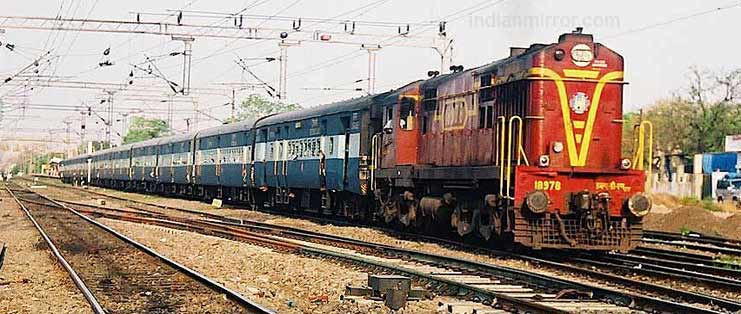Indian Railways To Use Facial Recognition Technology To Identify Criminals

In a move that could potentially be considered controversial, the Indian Railways is reportedly planning to use facial recognition and artificial intelligence technology to identify and catch criminals.
The Railway Protection Force, established by the Railway Protection Force Act, 1957 which works for the protection and security of railway property, reportedly aims to link the proposed facial recognition system with existing databases. This includes, but is not limited to the Crime and Criminal Tracking Network and Systems (CCTNS).
Prajakta Hebbar
For the full article please visit https://analyticsindiamag.com/indian-railways-to-use-facial-recognition-technology-to-identify-criminals/
History of Rail Transport in India
The Indian Railways, a symbol of national pride and an essential mode of transportation for millions has a rich history that dates back to the 19th century. Here’s a summarized account of its evolution:
- Early Beginnings (1832-1852): The first proposals for railways in India were made in Madras in 1832. The Red Hill Railway ran from Red Hills to Chintadripet Bridge in 1836-1837 and was the first in India. This railway was primarily used for transporting granite stones for road-building work in Madras.
- Passenger Railways and Expansion (1853-1924): The first passenger train in India commenced its journey between Bombay (Bori Bunder) and Thane on 16 April 1853. This marked the beginning of passenger railways in the country. The subsequent years saw the railway network’s expansion, with several new lines and services.
- Electrification and Further Expansion (1925-1951): India’s first electric passenger train began operations between Victoria Terminus and Kurla in 1925. During this period, they also witnessed the electrification of several suburban tracks around major cities.
- Zonal Re-organization and Developments (1951-1983): The railways underwent a significant re-organization into regional zones starting in 1951. This period also saw the introduction of the Rajdhani Express in 1969 and advancements in electrification.
- Modern Era (1984-Present): The Calcutta Metro, launched in 1984, became the country’s first metro service. The subsequent years have seen the introduction of high-speed trains, computerized ticketing, and significant infrastructure upgrades.
Facial Recognition: A Deep Dive into the Technology and Structure
Facial recognition is a subset of biometric technology that identifies or verifies a person based on facial features. Over the years, it has gained significant traction in various sectors, from security to marketing. Let’s delve into the technological background and structure of this intriguing technology.
What is Facial Recognition?
Facial recognition systems capture and compare facial features to a database to identify or verify a person. It’s akin to how a fingerprint or voice recognition system works, but it focuses on the unique features of a person’s face.
Technological Background
The technological underpinnings of facial recognition have evolved over the years. Here’s a brief overview:
- Pattern Recognition: In the early stages, facial recognition relied on pattern recognition, where the system would identify facial features by extracting landmarks, or features, from an image of the user’s face.
- 3D Recognition: This approach uses 3D sensors to capture information about the shape of a face. It then uses this data to identify distinctive features, such as the eye sockets, nose, and chin contour.
- Thermal Cameras: These identify the heat patterns generated by blood vessels, offering a unique way to recognize faces, even in the dark.
Structure of Modern Facial Recognition Systems
Modern facial recognition systems are primarily powered by artificial intelligence (AI) and machine learning, particularly deep learning. Here’s a breakdown:
- Image Acquisition: The first step involves capturing a facial image using cameras or other imaging devices.
- Face Detection: The system must detect the face in the image before recognition. This involves distinguishing the face from the background and other objects.
- Feature Extraction: The detected face is then processed to identify unique features. This could be the distance between the eyes, the shape of the cheekbones, or any other distinctive feature.
- Comparison: The extracted features are compared to a database of known faces.
- Result: The system will identify a match, verify the person, or return a negative result.
- Deep Learning and Neural Networks: Deep learning, a subset of machine learning, uses neural networks with many layers (hence “deep”) to analyze various factors of a face. Convolutional Neural Networks (CNNs) are commonly used for image-related tasks, making them ideal for facial recognition.
Concerns and Ethical Implications
While facial recognition offers numerous benefits, it’s not without its concerns. Issues related to privacy, consent, and potential misuse have been raised. There’s also the challenge of biases, where systems might show inaccuracies based on race, gender, or age.
The Future of Facial Recognition
With advancements in AI and computing, facial recognition is poised to become even more accurate and widespread. However, as with all technologies, balancing utility and ethical considerations is crucial.
In conclusion, facial recognition is a powerful tool that has transformed various industries. Its blend of AI, deep learning, and imaging technologies offers a glimpse into the future of biometric systems. However, as we embrace its capabilities, we must be aware of its implications and use it responsibly.